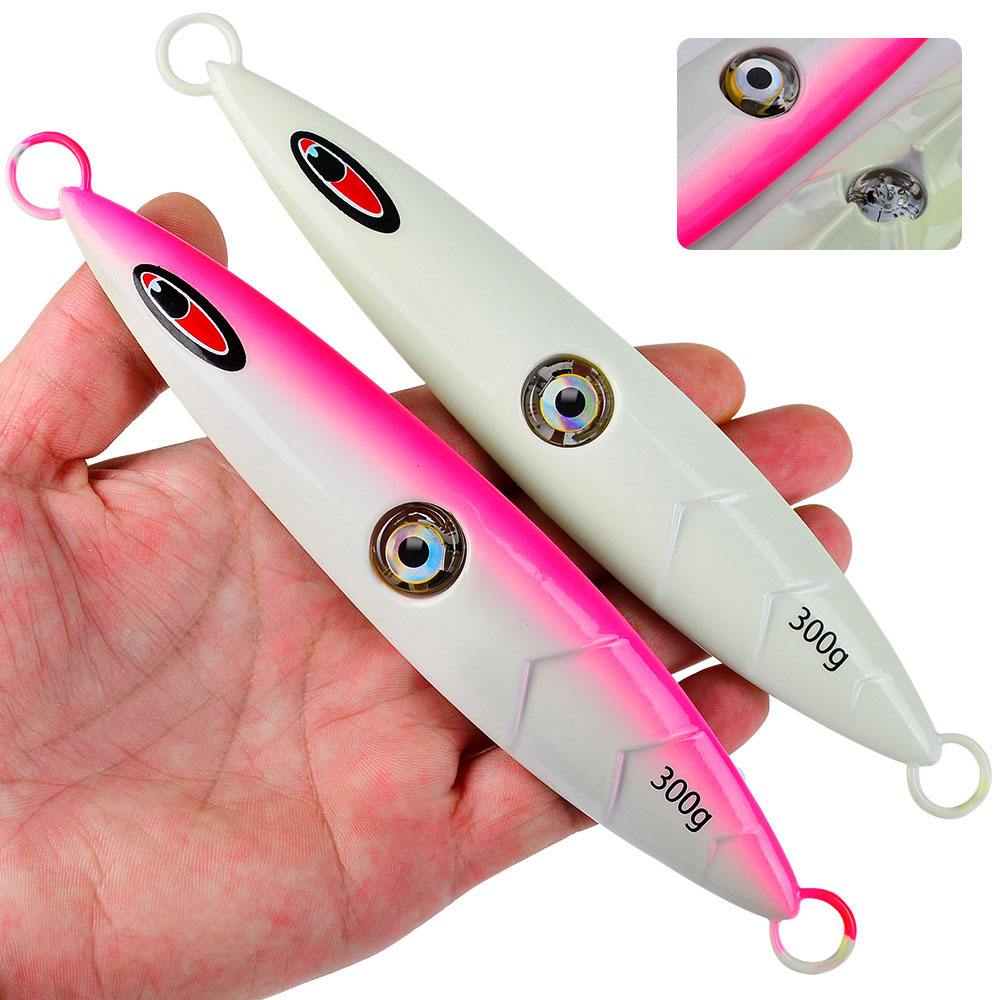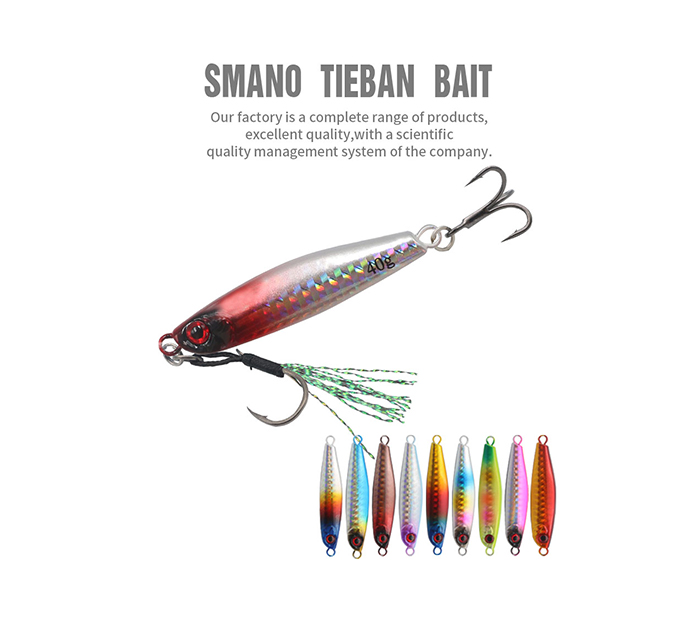Fishing for bass is part science, part instinct. When it comes to lure color, many anglers make choices based on habit or hearsay, but the color of your fishing lure can dramatically influence whether a bass strikes or swims away. This article breaks down how color interacts with biology, environment, and behavior—equipping you to make informed choices next time you hit the water. If you’re looking to upgrade your lure selection or customize your tackle to match specific waters, check out Laike. With over a decade of experience and a factory network spanning more than 200 suppliers, Laike offers more than 500 types of fishing gear—from rods and reels to highly effective metal jig lures.

Why Does Lure Color Matter in Bass Fishing?
Bass don’t see colors the way humans do. Their perception is shaped by evolutionary design and environmental limitations. That’s why lure color isn’t just cosmetic—it speaks directly to how bass identify prey.
Visual Perception Mechanism of Bass
Bass rely heavily on their vision during feeding, particularly in clear water. Their eyes are adapted to detect contrast and motion more than fine details. While they can distinguish some colors—especially in the red and green spectrum—their color sensitivity changes depending on depth and water clarity.
Good simulation is also an important aspect of lure fishing. Lure fishing friends all know that when fish hunt bait fish, they first attack the head of the bait fish. So how do they judge the head? It is through the eyes. This explains why details like 3D eyes on a lure can increase strike rates significantly.
Influence of Water Clarity on Color Visibility
In stained or murky water, colors fade quickly—reds and oranges disappear first while blues and purples last longer. High-contrast colors like chartreuse or black stand out more in such conditions. In clear water, more natural tones like green pumpkin or watermelon prove effective.
Role of Light Penetration and Depth
As you go deeper, less light penetrates, and bass shift from relying on color to focusing on silhouette and vibration. That’s where metallic lures with reflective surfaces have an edge. Deep-water jigs like the Jigging Lure with LED Light take this a step further by incorporating a vivid LED eye to mimic natural bioluminescence—a serious advantage in dark environments.

How Do Environmental Conditions Affect Color Selection?
Even in similar water bodies, the right lure color can change day-to-day based on external factors. You should always be adjusting based on what the environment is telling you.
Water Temperature and Seasonal Patterns
In winter, bass metabolism slows down. You’ll often find them hugging the bottom, feeding on slow-moving prey like crayfish. In winter, the water is usually very clear, so you don’t need to pay too much attention to the color of the jig. Natural colors, green, blue, black and other common colors are all fine.
Weather Conditions and Light Intensity
Cloudy skies or overcast days lower light levels underwater, muting colors. This is when using high-contrast lures can help bass locate your bait more easily. On sunny days, natural colors that blend into the environment become more convincing.
Habitat Type and Background Contrast
Vegetation-heavy zones require lures that either blend in (to appear natural) or contrast strongly (to trigger aggression). In rocky areas with light-colored substrate, dark lures create clearer silhouettes.
What Are the Behavioral Responses of Bass to Different Colors?
Color doesn’t just help bass see your bait—it also triggers instinctive responses based on mood, hunger level, and territory defense.
Aggression Triggers Based on Color Stimuli
Bright reds and oranges can agitate territorial bass during spawn season. These shades mimic intruders like sunfish or crawfish near their nests. When you’re flipping jigs into bedding areas, using a vibrant skirted jig can provoke defensive strikes.
Feeding Instincts and Natural Prey Imitation
Bass often lock onto food patterns—shad, crawfish, or bluegill—depending on the lake’s forage base. Matching the hatch with accurate color imitation can tip the odds in your favor. Subtle greens and silvers often mimic baitfish well in clearer systems.
Territorial Defense and Reactionary Strikes
In reaction bites—especially around cover—the flash of a metallic jig can be enough to trigger an attack before the bass has time to think. That’s where fast-moving lures like Metal Jig Lure002 shine with their realistic jigging motion and sharp treble hooks.

How Does Lure Type Interact with Color Efficiency?
Color alone doesn’t do the work—how a lure moves matters just as much. Some types are better suited for certain visual conditions based on their action profile.
Action Profile of Jigging Lures with LED Light
This unique fishing bait uses a glowing LED to mimic natural light, shining bright in cloudy waters or after dark to lure bait fish. Designed for deep jigging or night sessions, its electronic eye not only adds realism but also draws attention in pitch-black conditions where standard lures fail.
Flash and Vibration Characteristics of Metal Jig Lures
The core feature of VIB is its strong sense of vibration. When it is dragged, it will generate high-frequency vibration through the rapid swing of its body. This makes it ideal when you need to draw fish from a distance. Vibration plus flash equals visibility plus aggression trigger—a perfect combination in open water hunts.
Depth-Specific Performance of Laike’s Metal Jig Series
Take the Slow Pitch Jig Lure for example. It flutters as it sinks—mimicking a dying baitfish. The Metal Jig Lure 001 has a slow, enticing sink that mimics a wounded baitfish, triggering strikes from bass and bottom feeders. Available in multiple weights and custom colors, this jig adapts well across depths from 10ft flats to 50ft drop-offs.

When Should You Use Bright Versus Natural Colors?
Color choice isn’t static—it needs to be dynamic depending on what’s happening under the surface.
High Visibility in Murky or Stained Water
If you’re dealing with chocolate milk water after a rainstorm, it’s not the time for subtlety. Go bold—chartreuse, hot pink, fire tiger patterns all stand out and help fish locate your bait.
Subtle Presentation in Clear Water Conditions
When visibility extends several feet down, bass have time to inspect your lure. Stick to natural shades that match local forage: green pumpkin for crawfish imitation or silver-blue for shad profiles.
Adaptive Use During Transitional Light Periods
During dawn or dusk—known as “low light windows”—colors behave differently. Use reflective or two-tone lures that offer both flash and contrast as ambient light changes by the minute.
How Can Anglers Optimize Their Lure Color Strategy?
Color strategy is part observation, part experimentation.
Matching Hatch Patterns and Local Forage Species
Spend time examining what your local bass are eating. Are they after shad? Then silver lures rule. Crayfish? Then brown-red combos win. Accuracy beats guesswork every time.
Rotating Colors Based on Real-Time Feedback
If bites stop coming mid-session, change colors before switching lures entirely. Often it’s not your action—it’s how your presentation looks against shifting light or clarity.
Integrating Laike’s Product Range into a Tactical Approach
With offerings from LED-enhanced deep jigs to fluttering slow-pitch metals in customizable shades, Laike gives you tools tailored for clarity shifts, depth transitions, and species moods—all backed by decades of manufacturing expertise.
Laike’s OEM/ODM services are streamlined through a simple customization process, and they’re always available to answer your inquiries.
FAQ
Q1: What lure color works best in muddy water?
A: Bright colors like chartreuse or fire tiger stand out better due to increased contrast under low visibility conditions.
Q2: Do I need different colored lures for morning and evening?
A: Yes. Transitional light conditions benefit from reflective or two-tone lures that adapt as ambient brightness changes rapidly.
Q3: Are LED lures effective at night?
A: Absolutely. A glowing LED eye mimics bioluminescence and significantly improves lure visibility in dark water environments.




